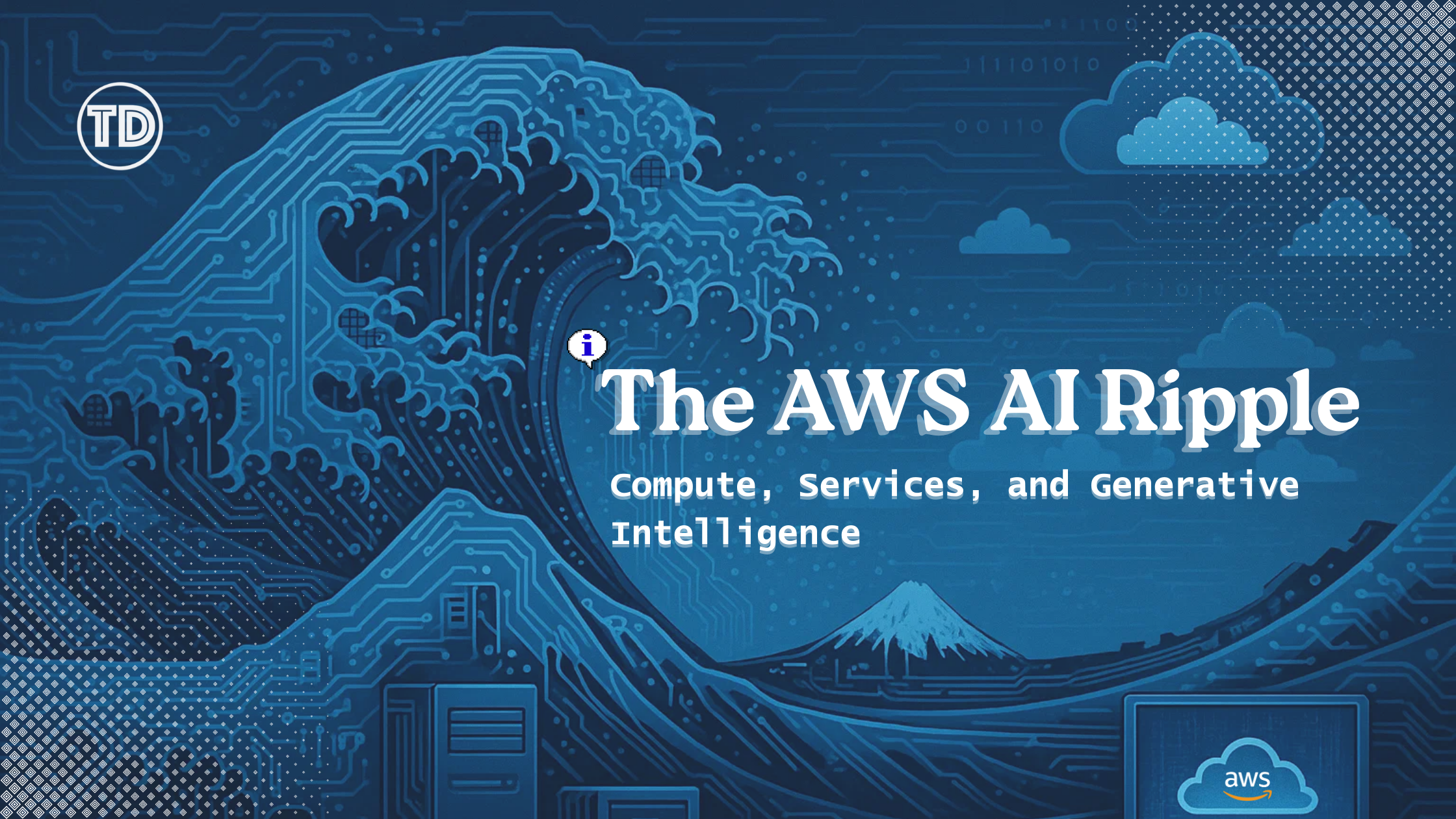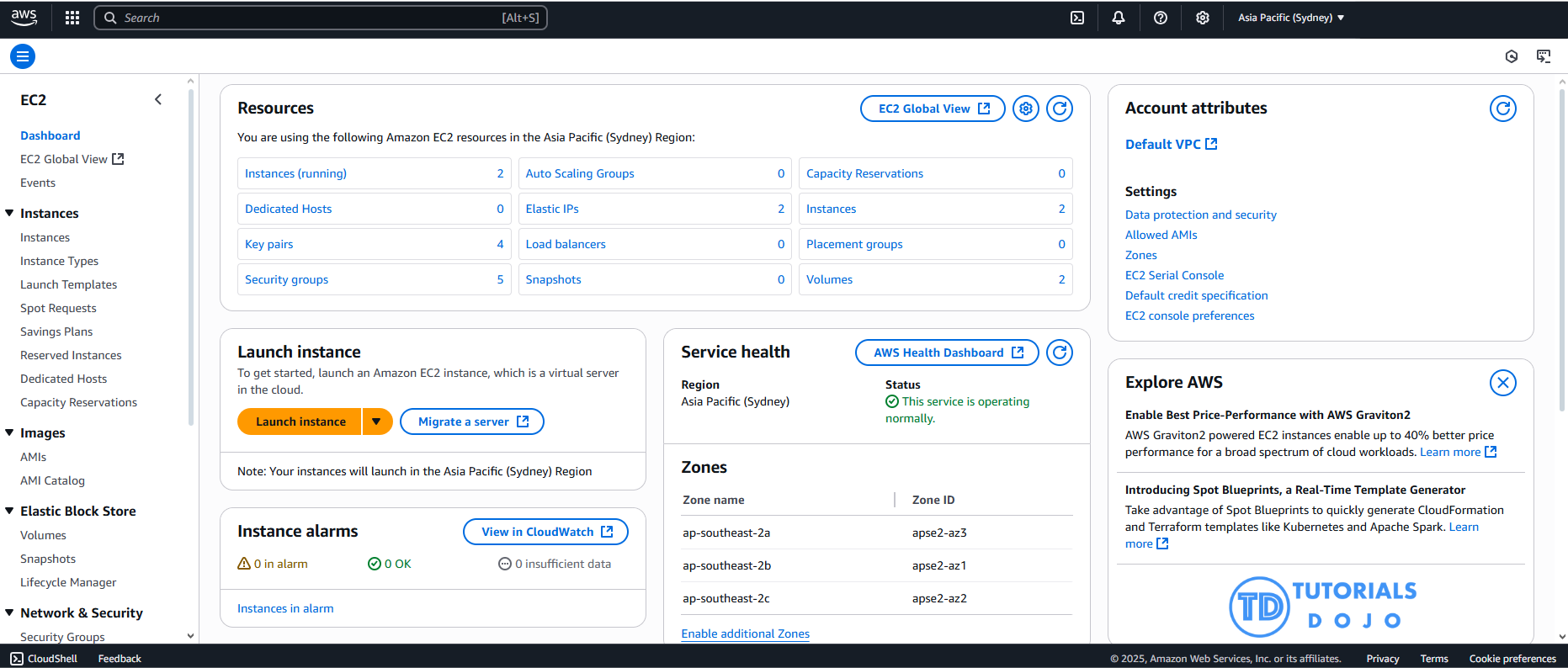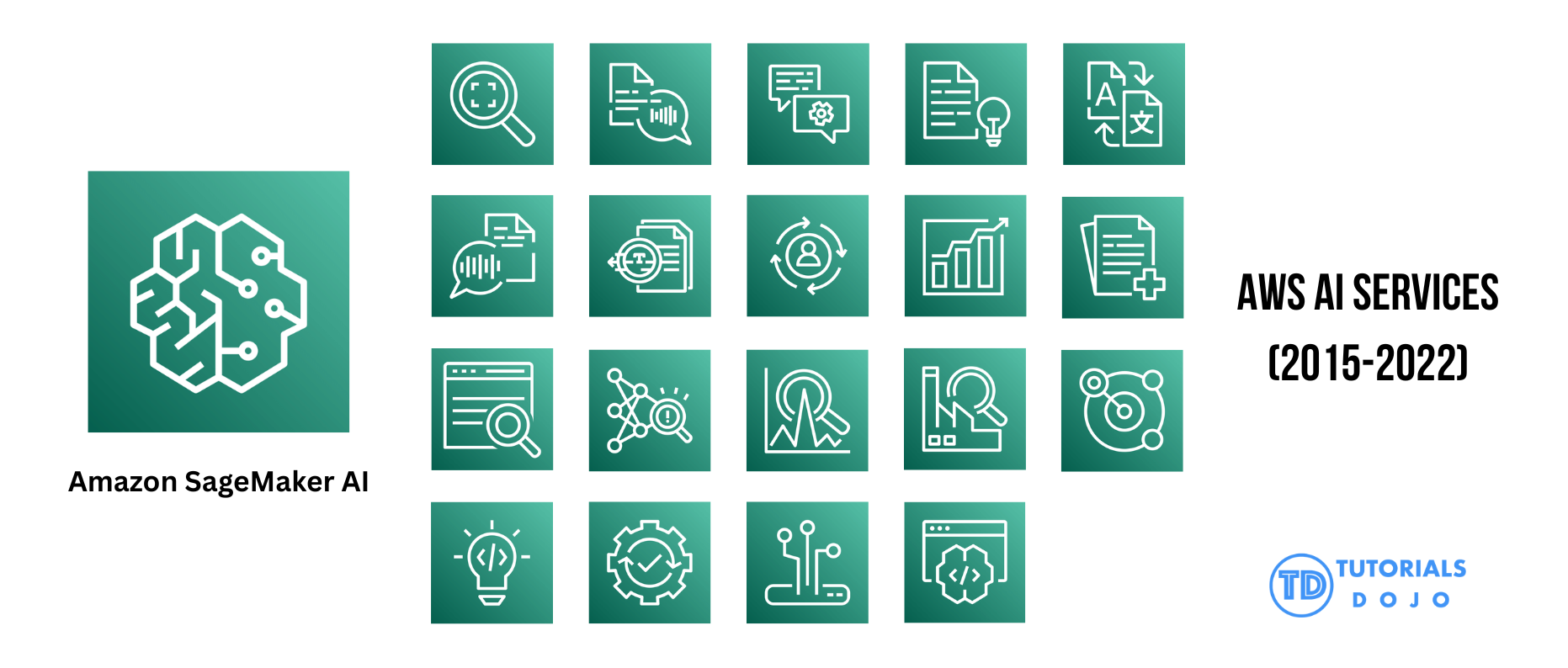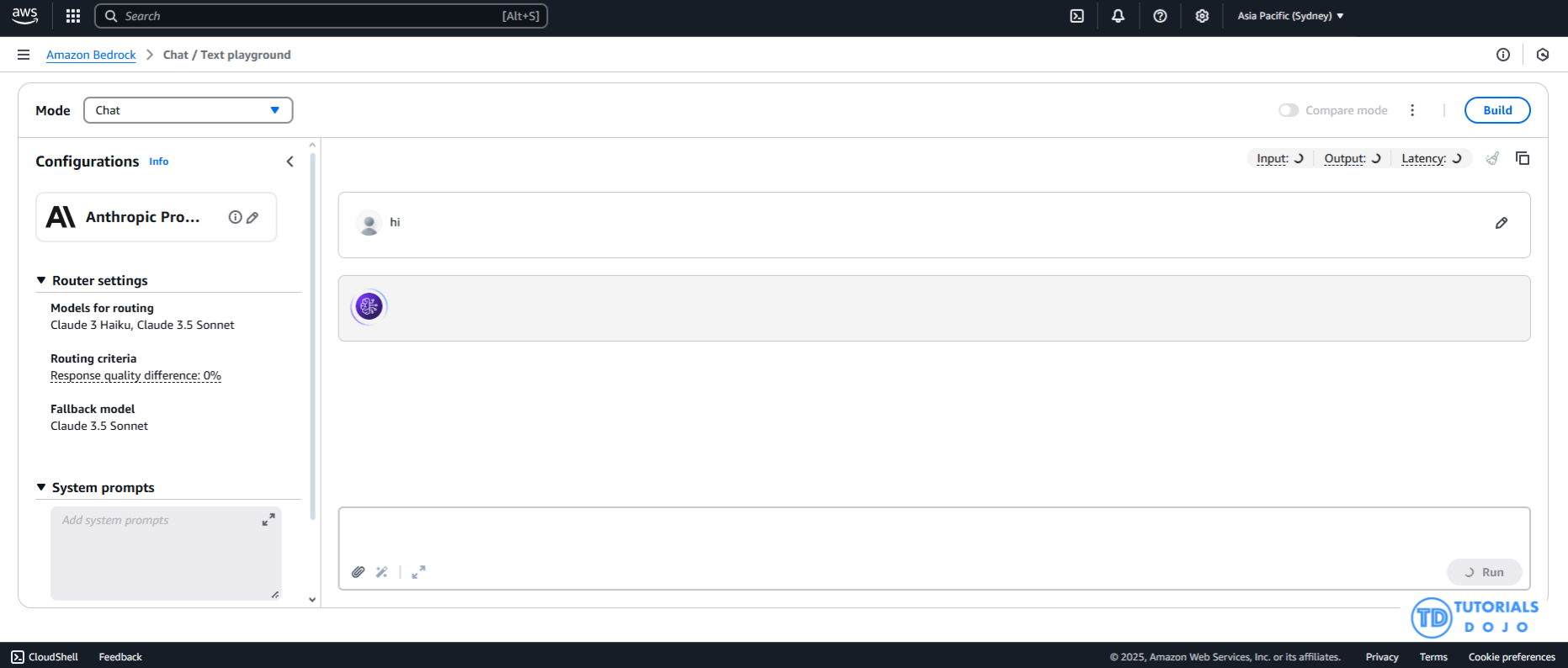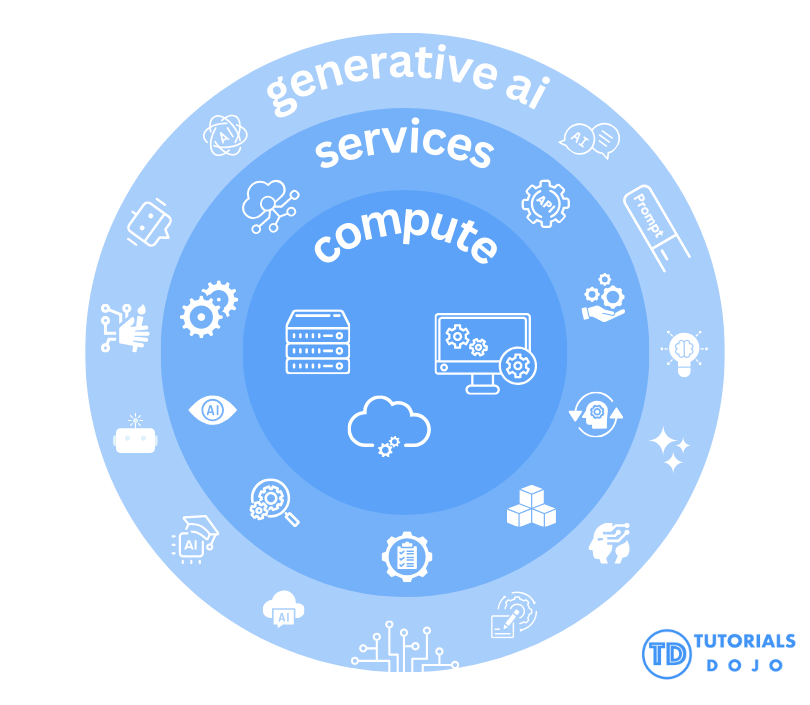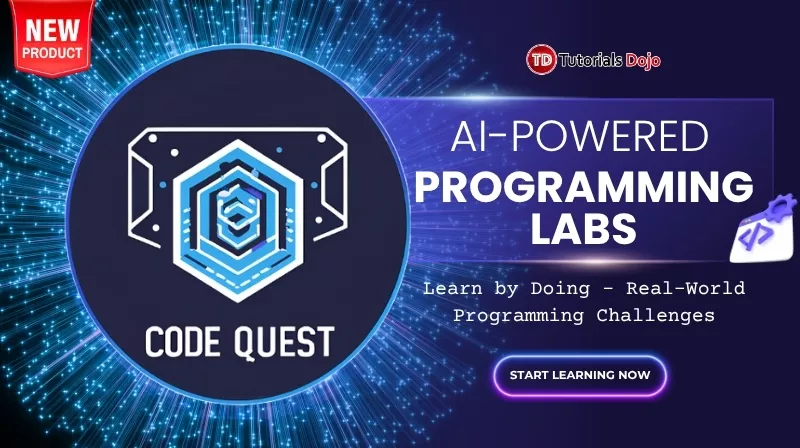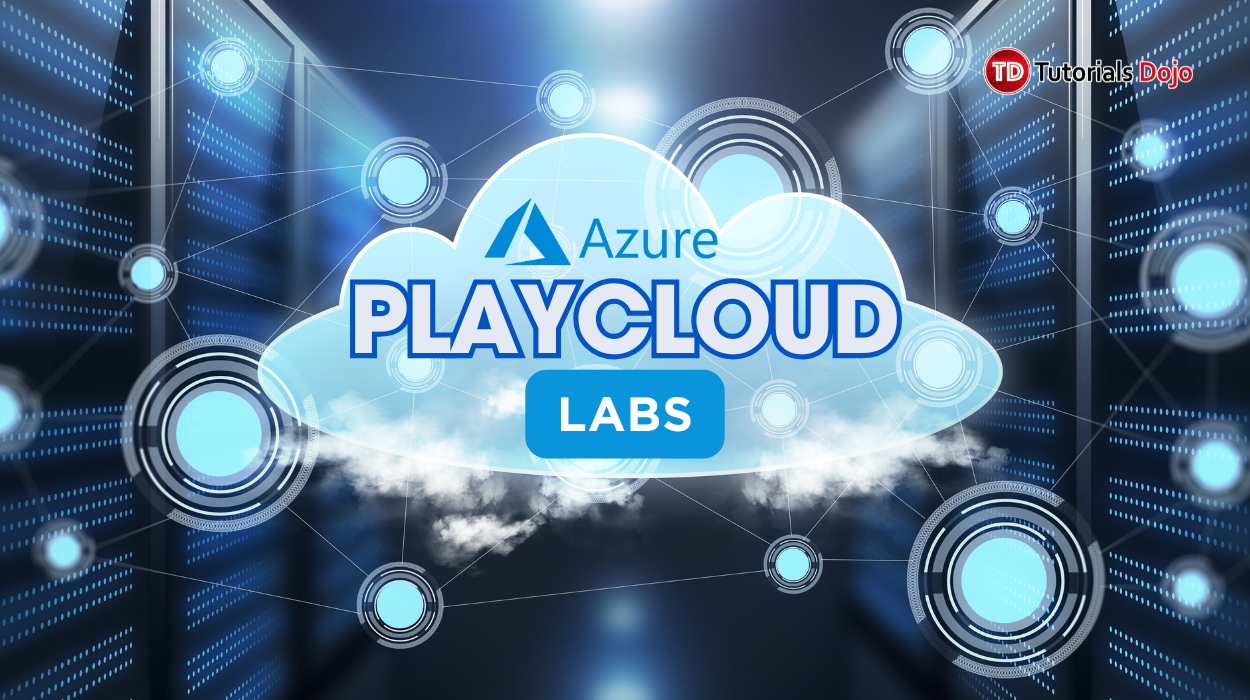Last updated on September 12, 2025
In 2006, building AI required a PhD and a million-dollar lab. In 2024, it requires a laptop and a $5 AWS credit. Before, training a neural network was something only elite research labs with specialized hardware could accomplish. Now, anyone with curiosity and an internet connection can spin up AI models rivaling what Fortune 500 companies built just five years ago. That transformation was driven by Amazon Web Services (AWS) through three strategic waves of innovation: Compute Foundation, AI as a Service, and Generative Intelligence. The AWS AI Ripple. While most tech giants built AI for themselves, AWS built the infrastructure so everyone else could build on top of it. This story is less about one company’s success and more about how AWS has democratized AI, making it accessible to students, startups, and global enterprises. You are part of this movement. AWS didn’t just ride trends; they anticipated the next obstacle and built the foundation to remove it. This is the blueprint every tech professional should understand, and by doing so, you become part of a forward-thinking community. Amazon EC2 Dashboard When AWS launched EC2 in 2006, the most significant barrier to AI wasn’t know-how but compute power. Training models required specialized hardware costing upwards of $100,000 for a decent setup. AWS flipped the script by making enterprise-grade computing power rentable, on-demand, and pay-as-you-go. Suddenly, a grad student had access to the same resources as big tech firms. With GPU-powered instances rolling out by 2010, AWS was not just providing resources but also paving the way for deep learning before it became a buzzword, a contribution that we can all appreciate and respect. New opportunities were made possible by this democratization: By the Numbers: Training expenses decreased from hardware investments of over $100,000 to $10–100 per experiment. And by 2015, AWS had evolved from a mere server provider to the launchpad for modern AI research and startups, marking a significant transformation in the industry. AWS AI Services (2015-2022) With the accessibility of computing power, AWS has empowered businesses, developers, and students to overcome the barrier of expertise. Not every business needs to hire PhD data scientists to build custom AI. AWS identified the need for simplicity and launched Amazon SageMaker in 2017, making it easier to build, train, and deploy machine learning models. Then, they introduced pre-built AI services like Rekognition (for image analysis) and Comprehend (for NLP), making AI as simple as calling an API. The result? AI went mainstream: AWS has made AI a valuable tool in addition to democratizing computing. Because of this change, skills including managing and integrating APIs, digesting pre-trained models, preparing and preprocessing data, and knowing cloud security fundamentals are now significant. In today’s technological environment, learning these abilities and experimenting with AWS AI technologies is essential. Pro Tip: Many of these services offer free tiers, providing an exciting opportunity for experimentation and learning. To pique your interest and advance your education, test Amazon Comprehend’s sentiment analysis on user reviews or try Amazon Rekognition with your images. Amazon Bedrock Interface The launch of ChatGPT in 2022 changed the way people interacted with artificial intelligence. Content, code, and conversation became part of the focus during the creation process. However, it was still challenging to incorporate these powerful models into company workflows. AWS’s response to the evolving AI landscape was Amazon Bedrock (2023). Bedrock introduced various foundation models (Amazon Titan, Anthropic, Cohere, and more) across a single platform rather than depending on one specifically. Because of this flexibility, you can scale your AI initiatives without usual infrastructure issues, which lets you experiment and adapt. Thanks to the multiple uses of generative AI, companies today are undergoing a major operational revolution. Customer support teams deploy AI agents that handle 80% of tier-1 support tickets, while software development teams use AI copilots that reduce coding time by 30-40%. Marketing departments are generating personalized content at scale, and legal teams are automating the analysis of contracts and reports. These applications are not limited to a specific industry or department, but are making waves across the board. The lengthy planning process can now be rapidly prototyped in a matter of days, thanks to the power of generative AI. The AWS AI 3 Waves/Ripple Framework Looking back, AWS has followed a clear pattern that any tech professional should understand: Wave 1 broke the compute barrier, Wave 2 broke the expertise barrier, and Wave 3 broke the integration barrier Career Insight: Each Wave created new job categories. Wave 1 birthed cloud architects, Wave 2 created ML engineers, and Wave 3 is creating AI product managers. What will the 4th Wave bring? Hints of a “Wave 4” are already showing. Our Prediction: AI will move closer to where data is generated and where decisions actually matter. Think intelligent edge devices: smart cameras that recognize faces without cloud connectivity, IoT sensors making real-time calls in factories, and autonomous systems reacting instantly to their surroundings. We’ll also see the rise of industry-specific AI: models built for healthcare diagnostics, financial risk assessments, and manufacturing quality control. This shift moves AI from being general-purpose to specialized intelligence with domain expertise. The physical world is becoming the next frontier. Robotics, autonomous vehicles, and smart city infrastructure are where digital intelligence will meet physical action. Are there any early signs? AWS is already pushing in this direction. IoT Greengrass with AI capabilities, strategic industry partnerships for specialized models, and a growing focus on real-time edge AI. Together, these point toward Wave 4 making AI not just a digital tool, but an everywhere presence woven into our environment. There is more to AWS’s journey than AI. It’s a blueprint for how to make cutting-edge tech accessible. They don’t just build tools but provide the groundwork for others to follow. Here’s a takeaway for developers: concentrate on the foundational work that endures through all the excitement, such as scalable systems and APIs. It’s about creating business platforms and ecosystems, not just point solutions. This is just the beginning of the AI Revolution. If AWS’s journey teaches us anything, today’s cutting-edge becomes tomorrow’s foundation. The most transformative applications are still waiting to be built, ones that will reshape entire industries and create new ways of living and working. They exist today only as sparks of imagination in someone’s mind, ready to become reality with nothing more than curiosity and the courage to experiment.
Wave 1: The Compute Foundation (2006–2015)
Wave 2: AI as a Service (2015–2022)
Wave 3: Generative Intelligence (2022–Present)
The AWS AI Ripple Framework
Wave
Barrier Broken
Key Innovation
Career Impact
Wave 1
Compute Access
Pay-as-you-go Infrastructure
Cloud skills became essential
Wave 2
AI Expertise
Pre-built AI Services
API-first thinking dominated
Wave 3
Integration Complexity
Unified AI Platform
Prompt Engineering emerged
What’s Next?
Final Thoughts
References:

